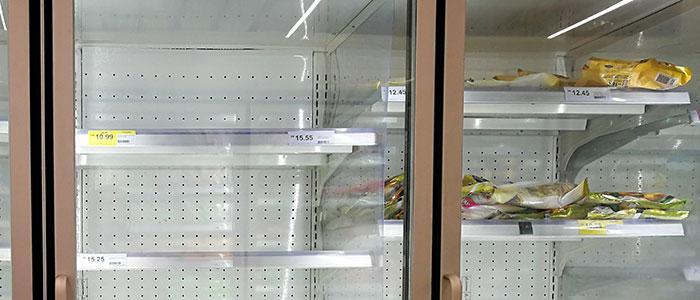A food desert is a term used for decades by researchers to describe areas of the country, often poor or remote, where healthy food choices are hard to find. Often there is just one, small grocery store, residents have limited transportation options and there is usually a high concentration of people with diabetes in these areas.
The lack of access to healthy food reflects a larger problem in America: food insecurity. Food insecurity is a lack of consistent access to enough food for an active, healthy life and it’s an issue that touches people of all ages with all types of diabetes.

What is the diabetes link?
Whether it’s the result of too many empty calories or not enough nutritious ones, research shows that food insecurity in all its forms is a major risk factor for type 2 diabetes.
For most Americans experiencing food insecurity, the problem isn’t that they’re getting too few calories, it’s that they’re getting too many of the wrong kind. Usually, the cheapest and most readily available foods (fatty, fried takeout, high-sodium prepared meals, candy and soft drinks) provide plenty of calories, but they contribute to or make it hard to properly manage chronic conditions such as high blood pressure, kidney disease and diabetes.
That’s why researchers and food policy experts have begun moving away from the term food desert. Neighborhoods that lack supermarkets may still have a lot of places where residents can buy food—it’s just not very good food.
Diabetes may be tied to food insecurity in other ways, too. For some people, diabetes may be the cause of their food insecurity, not just the result. For example, someone with complications from diabetes may have a harder time holding down a job. And people on limited budgets might have to make hard choices between meals and medication to manage their diabetes.
For adults and children who already have type 1 or type 2 diabetes, food insecurity can also increase the risk of complications. If you start skipping meals, for example, it can disrupt your blood glucose (also known as blood sugar) levels and put you at higher risk of hypoglycemia, or low blood glucose. On the other side, those with diabetes who can afford only unhealthy fare may have more frequent high blood glucose levels, which can raise the risk of long-term complications.
Eliminating food insecurity would go a long way toward reducing the burden of diabetes. But researchers are quick to point out that food insecurity, like poverty, won’t be an easy problem to fix.
Who’s at risk?
The focus on food insecurity in inner cities has expanded to recognize that there are other groups that may have a hard time accessing healthy food. People in small towns and rural areas, for example, can face long drives to supermarkets with limited stock.
Older adults are another group that is particularly vulnerable to food insecurity and diabetes alike, and diabetes is a major concern among older adults who depend on food banks. After all, it’s tough to manage your diabetes if you can’t afford the right foods.
Fresh produce and proteins often aren’t available to older adults on a tight budget or to those with mobility issues. Food boxes, for example, are often full of carbs with low-cost items like juice, pasta and white rice are standard.
And accessing the right types of food isn’t the only issue. Preparing food from scratch can be equally tough. Many seniors are unable to stand, or arthritis might make chopping hard. Because of this, older adults often depend on sandwiches, canned soups or meals they can microwave.
That’s not to say hunger can’t still play a role. Many people who rely on public assistance for all or part of their food budgets may not be able to stretch their money to last until their next assistance payment.
Find food assistance resources.
If you’re struggling to eat properly on a limited budget, or for other reasons, there are resources that can help. Your community may have a food bank program or food pantry. Or you may qualify for the Supplemental Nutrition Assistance Program (SNAP), a USDA program that provides food aid to those in need.
Find resources for diabetes care. Talk to your doctor or diabetes educator about your situation. They may be able to prescribe lower-cost medications or refer you to programs designed to help with prescription costs. And if you need help affording your prescriptions, visit InsulinHelp.org or call 1-800-DIABETES (800-342-2383).
